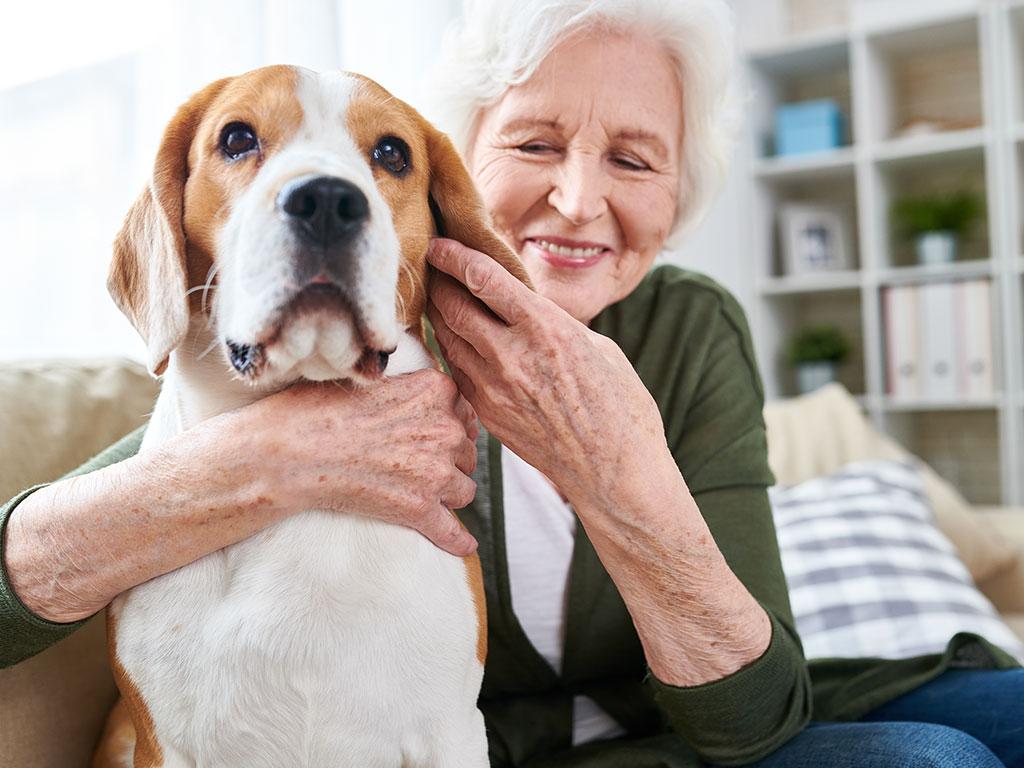When animals improve the well-being of seniors, fight against loneliness, help develop residual abilities such as walking, and more ... Find out in this article, how animals can awaken for a moment, the joy and the comfort in the elders !
Pet therapy, what is it exactly?
Pet therapy, or animal assisted therapy, is used for therapeutic purposes for children, adolescents, adults, and also seniors. It is not a cure for diseases, but a therapy that improves the psychological and physiological well-being of those who benefit from it. Pet therapy can be done by using various types of animals: dogs, cats, rabbits, chickens, etc. The animals are selected and trained, so they can act as partners to the specialists who surround the person. Pet therapy can be done individually or in groups, more specifically to people who suffer from a cognitive, physical, psychological or social disorder.
Reminiscence effect
For patients suffering from Alzheimer's disease, the animal represents in most cases, memories of animal-related experiences. This is the reminiscence effect. Animals are the common thread that allows the elder to return in the past to relive good times. Pet therapy is a source of rich sensory stimulation. It also stimulates maternal instinct in some seniors. Some gestures they engender refer to long-established patterns such as taking care of a child.
And in retirement home ? How does pet therapy work out?
In the majority of seniors residences offering pet therapy services, dogs are most often used during sessions. Indeed, according to the Institute of Zootherapy of Quebec, the good mood of the dog attracts attention and encourages residents to express their feelings by talking to the animal. The dog is active, loves to play and appreciates the human contact.
Many benefits
Decreased anxiety
Animals reduce stress, anxiety and provide warmth and comfort. The animal brings the person to capture his interest and live the present moment.
Improved mood
Many studies cited in the article Main in the paw of the pet therapy worker, Mrs. Régine Hétu, specify that the visit of an animal allows more smiles, verbalizations, requests and laughter. Thus, several positive behaviors derive from pet therapy.
Improved self-esteem
Pet therapy improves self-esteem by providing a sense of responsibility for the care that is given to animals. Indeed, pet therapy makes it possible to value the seniors and increase their feeling of confidence since they find themselves looking after the animal.
Decrease in isolation
The presence of an animal allows benefits at the relational level, because it creates a bond of trust and attachment. This way, residents can reconnect with their surroundings and encourage discussion with other residents.
Residual capacity development
According to Zoothérapie Québec, with the help of an animal, the worker encourages the optimization of his residual functional abilities and gives him an active role to play in his new environment. Seniors have a freedom of choice and manifest their preferences among a variety of activities to be carried out with the animal. For example, the brushing exercises of the animal stimulate praxies of the elder, the decoding of the postures of the animal allows him to better understand his environment and the expression of reminiscences stimulates his memory. In addition, the resident can develop his physical abilities by walking the dog.
Some resources to learn more about pet therapy
Douglas Mental Health University Institute
Institute of Pet Therapy of Quebec
Find a residence offering pet therapy service
To find a residence offering pet therapy service, click here .












